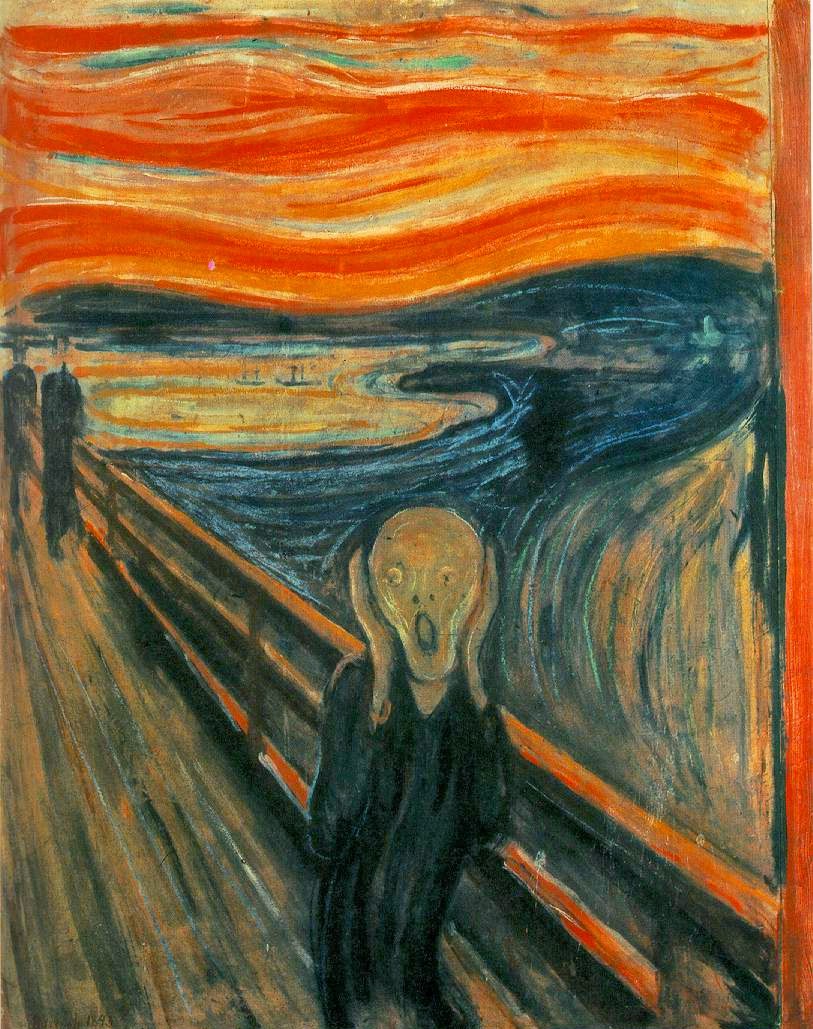Georges Seurat, Sunday Afternoon on the Island of La Grande Jatte
Paul Gauguin, Vision After the Sermon
Paul Gauguin, Fatata Te Miti (By The Sea)
Paul Gauguin, Manau Tupupau (The Spirit of the Dead Watches)
Paul Gauguin, What Are We? Where Do We Come From? Where Are We Going?
Henri Rousseau, The Dream
Vincent Van Gogh, The Potato Eaters
Vincent Van Gogh, The Sower
Vincent Van Gogh, The Night Cafe
Vincent Van Gogh, The Starry Night
Edvard Munch, Madonna
Edvard Munch, The Scream
Paul Cezanne, Still Life with Eggplants and Ginger Jar
Paul Cezanne, Landscape with Mont Saint Victoire
Paul Cezanne, Bathers
Auguste Rodin, Age of Bronze
Auguste Rodin, Gates of Hell
Auguste Rodin, Burghers of Calais
POST IMPRESSIONISM
Georges Seurat
--divisionism
--pointillism
Paul Gauguin
--cloisonnism
--Tahiti
The Nabis
The Symbolists
--JK Huysmans
--Stephane Mallarme
Henri Rousseau
Vincent Van Gogh
--Theo Van Gogh
Edvard Munch
--expressionism
Paul Cezanne
Auguste Rodin
Read Chapter 3 in the textbook (Edvard Munch is found in Chapter 4).
A Symbolist Ballet
Below is a recreation by Rudolph Nureyev of the original production of The Afternoon of a Faun that starred the great dancer and choreographer Vaslav Nijinsky. It was first performed on May 29, 1912. Nureyev reconstructed something like Nijinsky's original performance for the 1980 movie Nijinsky. This ballet shocked audiences in 1912 with its candid sexuality.
The ballet is based on a poem by the Symbolist poet Stephane Mallarme about awakening male sexuality described in terms of ancient myth.
The music is by Claude Debussy. Debussy uses masses of chords and rhythmic fragments to create an over all effect, a musical impression. He is sometimes described as a musical "Impressionist."
 Vaslav Nijinsky in Afternoon of a Faun photographed in 1912
Vaslav Nijinsky in Afternoon of a Faun photographed in 1912

















